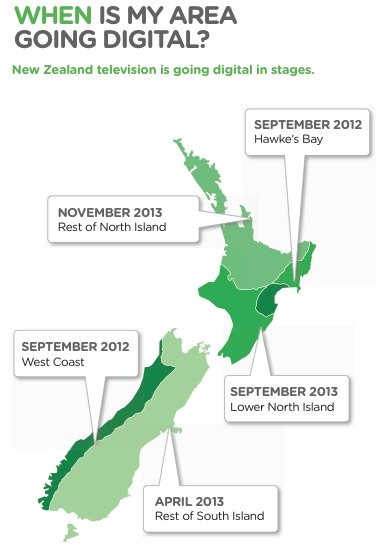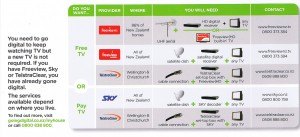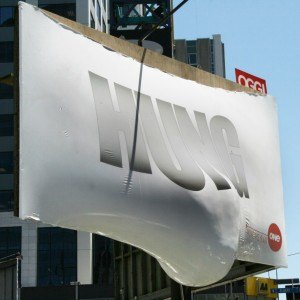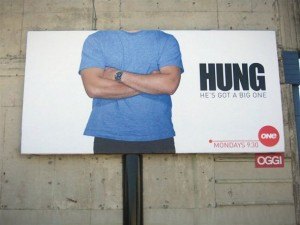 New Zealand’s analog television is being turned off from 2012 so an advertising campaign has been set up to encourage people to switch over to digital. We were sent the following flyer in the mail (click for a bigger version), with good intentions, but it is perhaps quite unhelpful.
New Zealand’s analog television is being turned off from 2012 so an advertising campaign has been set up to encourage people to switch over to digital. We were sent the following flyer in the mail (click for a bigger version), with good intentions, but it is perhaps quite unhelpful.
When?
It does not contain any mention of when the switch is happening. The statement “You need to go digital to keep watching TV” makes it sound like that could be very soon. But for us in Christchurch and most of the South Island it is happening in 2013, quite a while away. It would have been helpful to include a map from one of Going Digital‘s other leaflets, which shows when each area is switching.

Options?
The options table could be helpful, but contains little information that consumers care about—what is the cost of options, upfront and ongoing, and what is the difference between them? Eg. installation cost and quality of cable versus satellite versus UHF, what options let me rent box office movies and have extra channels available, are there options within options—of HD (what is HD?) and being able to record/play with live TV?
The text that is different on each of the Freeview logos (HD and satellite) is tiny.
Terminology between advertising materials differs. Freeview set-top box is used instead of satellite digital receiver, SKY decoder changes to SKY set-top box, and Freeview set-top box gets the fancy name of HD digital receiver when used in the context of Freeview HD.
Where?
The above map could also be used to show where the different services are available—86% of New Zealand is a frustratingly vague “where” (the 86% of New Zealand that can get Freeview HD includes: Auckland, Waikato, Tauranga, Hawke’s Bay, Manawatu, Wellington, Christchurch and Dunedin. It is going to be, or has been, expanded over 2011 into Invercargill, Timaru, Nelson, Wairarapa, Whanganui, Gisborne, New Plymouth, Taupo, Rotorua and Whangarei.)
The flyer looks good, but needs more detail to be more useful than just a reminder of something that people should get around to doing.
Have you, or do you know someone who has recently switched to digital or has yet to make the switch? How helpful has the advertising material been?



